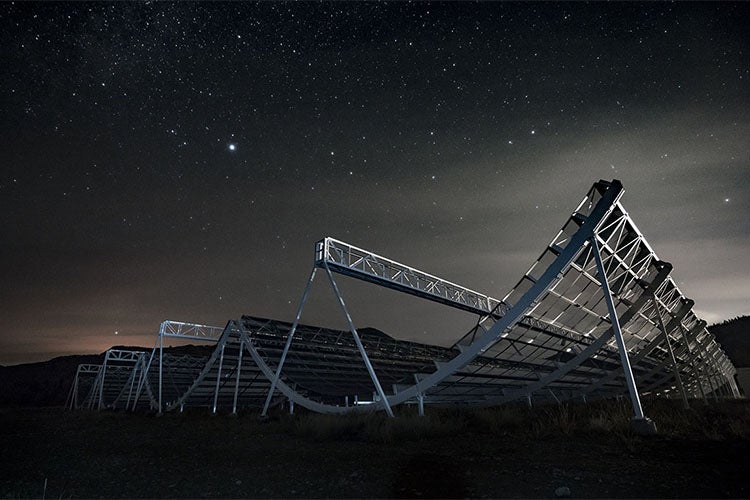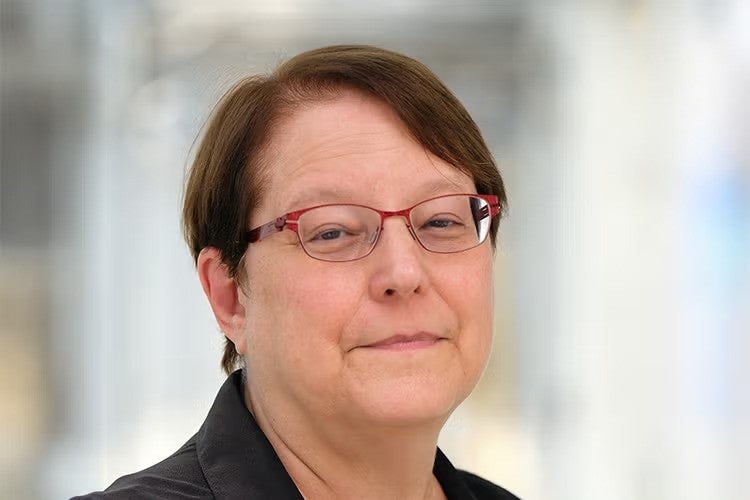
(Photo by Andre Renard )
Canadian collaboration including U of T astronomers wins Berkeley prize
Published: November 22, 2021
The Canadian Hydrogen Intensity Mapping Experiment fast radio burst (CHIME/FRB) team will receive the American Astronomical Society’s (AAS) 2022 Lancelot M. Berkeley − New York Community Trust Prize for Meritorious Work in Astronomy.
The CHIME/FRB team is being honoured for its progress on fast radio bursts – brief and powerful flashes of radio waves with enigmatic origins – using observations from the CHIME radio telescope. The team is being recognized in particular for an article published in Nature that identified the first known fast radio burst within our own galaxy and tied this flash to its potential source, a known magnetar – a highly magnetized and dense remnant of a massive star.
Paul Scholz, a Dunlap-NSERC Fellow with the Faculty of Arts & Science’s Dunlap Institute for Astronomy & Astrophysics, was a lead author on the paper. In January, Scholz will accept the prize on behalf of the team, along with Victoria Kaspi, professor of astronomy at McGill University and CHIME/FRB principal investigator.
“It’s an honour to be recognized for this work by the AAS,” Scholz says. “It's taken a large team years of work to get here, and I’m proud of what we've accomplished.”
Co-led by the University of Toronto, the University of British Columbia, McGill University, the CHIME/FRB team is hosted by the National Research Council of Canada, with collaborating institutions across North America and contributions of dozens of scientists.
“CHIME was unconventional in so many ways,” says Ue-Li Pen, a professor in the Faculty of Arts & Science’s Canadian Institute for Theoretical Astrophysics and a member of the CHIME/FRB team. “Canada provided a unique opportunity for a new, bold idea which has now confirmed us as international leaders.”



